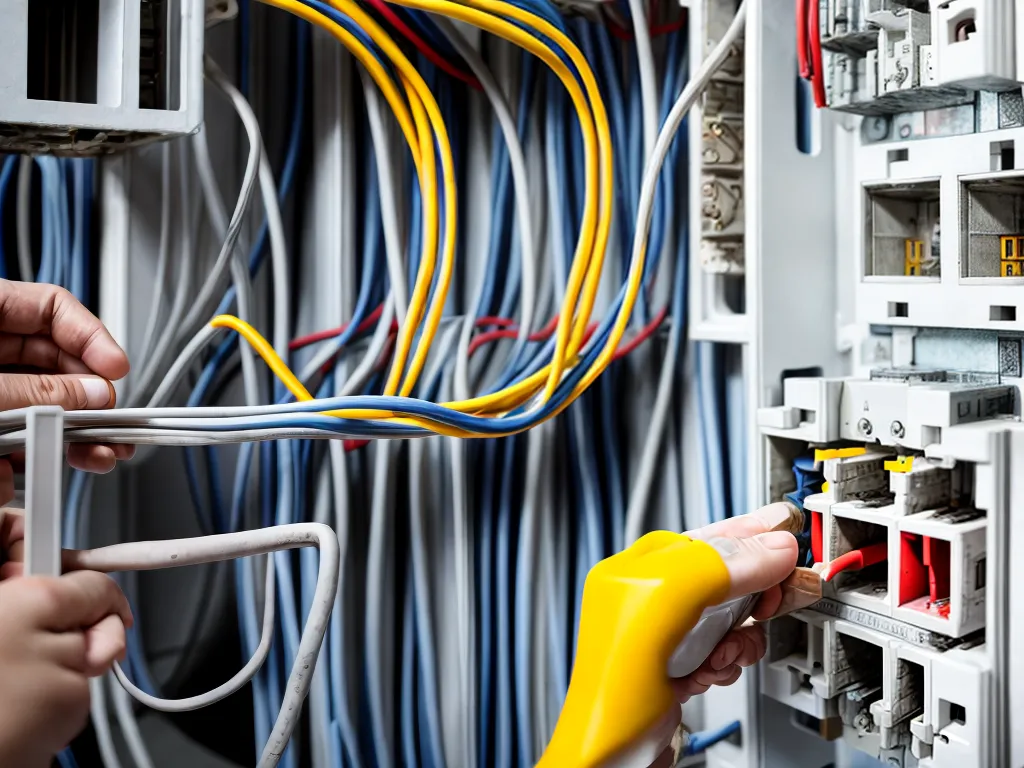
As an electrical contractor working on renovating and upgrading older buildings, I often encounter obsolete electrical systems that do not meet modern electrical codes and standards. Keeping these antiquated systems up to code while retaining the historic character of the building can be a challenge. In this article, I will discuss in detail the key considerations and requirements for electrical wiring in obsolete facilities.
Evaluating Existing Electrical Systems
The first step when taking on an obsolete building renovation project is to thoroughly evaluate the existing electrical system. This includes:
-
Inspecting the electrical service and main panel - Is the service capacity adequate for the intended use? Is the wiring in good condition? Is the panelboard properly labeled and do all circuits have appropriate overcurrent protection?
-
Checking wiring methods - Obsolete wiring like knob-and-tube and aluminum feeders may need replacement. Check for condition and if it meets code.
-
Verifying grounding and bonding - Ensure all systems are properly grounded. Bonding of gas pipes, water lines, etc. may need to be added.
-
Testing receptacles and devices - Outdated ungrounded 2-prong receptacles and unsafe devices like Federal Pacific panels may need upgrading.
-
Assessing load calculations - Calculate expected loads to ensure the system can support modern usage. Kitchens, A/C, and electric vehicle chargers may require an upgrade.
Thoroughly documenting all aspects of the existing system is crucial to developing a comprehensive renovation plan. Photographs, diagrams, and load calculations should be included.
Upgrading Electrical Systems to Code
Bringing an antiquated electrical system up to modern NEC code requirements while retaining historic aesthetic requires compromises. Key areas to address include:
-
Service and panel upgrades - If capacity is insufficient, the service lateral and main panel may need upgrading. Reuse existing raceways where possible. New equipment should match old aesthetically.
-
Wiring methods - Replace damaged, hazardous wiring like old NM cable and knob-and-tube. Fish new cables through walls to avoid damage. Use old work boxes to avoid new wall cuts.
-
Grounding and bonding - Supplement with new ground rods and bonding jumpers as needed per code. Inconspicuous locations are best.
-
Devices - Swap ungrounded receptacles for GFCI protected. Upgrade high-use circuits to 20 amps. Avoid surface mounted conduit and boxes.
-
Circuit protection - Install AFCI protection on bedroom circuits. Avoid CFCI and GFCI breakers where possible to retain original panelboard appearance.
-
Lighting - Retain historic fixtures where possible. LED lamp retrofits can often adapt them for modern use.
The key is balancing required safety upgrades with retaining the structure's original character as much as possible.
Working with Local Jurisdictions
When upgrading obsolete electrical systems, it is crucial to work closely with the local building department and jurisdiction. Key items to coordinate include:
-
Permitting - Develop plans that meet code intent and secure proper permits for all required electrical work. Perform only approved work with proper inspections.
-
Historic approvals - For historic structures, collaborate with local preservation committees to find compromise solutions acceptable to all stakeholders.
-
Inspection challenges - Provide ample documentation of existing conditions and test results. Use accessible raceways and box locations. Have contingencies ready for unforeseen issues.
-
Code alternatives - Explore alternative wiring methods or technical equivalencies allowed by code to avoid damaging historic fabric unnecessarily.
Being solution-oriented and open to creative approaches that protect public safety can help ease the approval process when navigating between modern code and historic aesthetics.
Case Study: 1920s Power Plant Redevelopment
A great example of sensitively upgrading obsolete electrical systems is the Hub Power Plant redevelopment project. The 1920s power plant in Boston was converted to luxury residences. Key electrical strategies included:
-
Preserving original switchgear lineups - These were cleaned, tested, and modified to serve as panelboards for units. Historic appearance was retained.
-
Running new feeders through old raceways - Existing underground tunnels and shafts allowed new wiring to be routed unobtrusively to each unit.
-
Utilizing insulation sleeves - Where wiring passed through structural beams, insulation protected them from damage while avoiding surface raceways.
-
Using early-1900s style fixtures - Lighting was updated with LED lamps and discreetly integrated occupancy sensors, maintaining a historic aesthetic.
The results blended 21st century living seamlessly within the industrial vintage character of the structure.
Conclusion
Updating inadequate, outdated electrical systems in historic buildings takes creativity and compromise. By thoroughly evaluating existing conditions, designing minimally invasive upgrades that retain original aesthetics while meeting safety codes, and working closely with oversight authorities, electrical contractors can find solutions that allow continued use of these cultural assets. The effort to balance preservation with modern needs is well worth it.